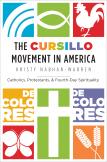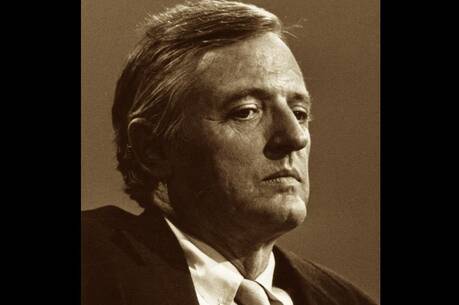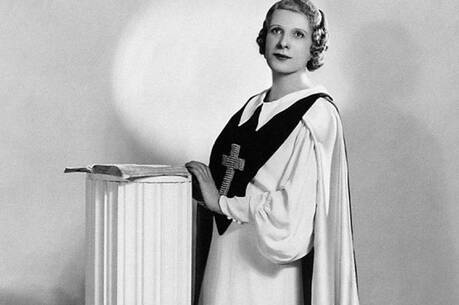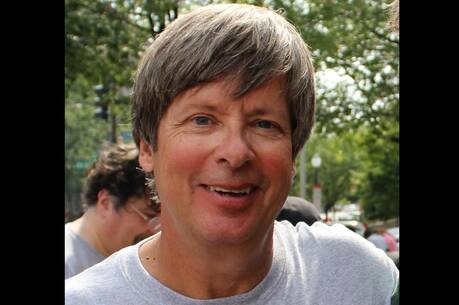Spanish Import
The University of North Carolina Press. 368p $29.95
The Cursillo de Cristiandad is a nearly 60-year-old, lay-led Catholic renewal movement with origins on the island of Mallorca, Spain, whose signature event is a 72-hour short course in Christianity. The Cursillo movement was inaugurated in 1944 by Eduardo Bonnín Aguiló, a Mallorcan Catholic layman who, sadly, had been overlooked until recently as the founder of the movement. The internal dynamics and history of the movement in Spain and in the United States are documented by Kristy Nabhan-Warren in her new book, The Cursillo Movement in America: Catholics, Protestants, & Fourth-Day Spirituality. Nabhan-Warren is a Congregationalist (United Church of Christ) scholar of religion and a professor of Catholic studies at the University of Iowa. Her previous research has focused on Marian apparitions in Mexican-American Catholicism.
The current work on the movement is a seven-year-long, historically-contextualized ethnographic study of the 1944 origins of the Cursillo that describes how it came to the United States in 1957 through Mexican immigrant communities in Texas and eventually came to be known to English-speaking Catholics throughout the United States. Thanks to the ecumenism of the early postconciliar era, the movement spread among Protestant communities and has undergone various adaptations to make it more appealing to different Protestant denominations, as well as parishes and the incarcerated. The author conducted over 250 ethnographic interviews of Catholic and Protestant cursillistas, did archival research in movement and private archives, and became a participant-observer in two Cursillo weekends, one a Catholic women’s Cursillo movement of the Diocese of Peoria, Ill., and the other an interdenominational event in an Indiana women’s prison.
Another fascinating aspect of Nabhan-Warren’s study of the movement is the impact it has had on Protestant communities. Concerned with documenting what she calls the internationalization of Christianity in the United States, as well as redressing a lack of attention to Christianity in the Midwest, the author traces the history of the Cursillo in the United States from an exclusively Catholic phenomenon with Latino roots to a pan-Christian one. In the apogee of ecumenism that followed immediately after the Second Vatican Council in many places in the United States, Protestants asked and were invited to participate in many Catholic Cursillos. Their participation blossomed into different variations of Protestant Cursillos closely affiliated with different denominations, yet generally interdenominational in approach. These variants, like Tres Días, Vía de Cristo, Walk to Emmaus and Great Banquet, remained faithful to the structure and purpose of Bonnín’s movement and are referred to as being “in covenant” with it.
Nabhan-Warren’s history of the Cursillo movement is a groundbreaking work and fills a void in American religious history, for which scholars of both Protestantism and Catholicism will be grateful. The ethnographic focus of this book captures the religious experience of the Cursillistas and takes us beyond a history of the movement to a thick account of the difference it has made in the lives of many and how those men and women understand the religious and personal impact of this renewal movement. Nabhan-Warren has also documented how mid-century Latino Catholicism influenced Anglo Catholicism and Protestantism through the movement in the United States, which had not been sufficiently appreciated before. She documents the origins of a phenomenon that is only likely to increase as Latinos become even more prominent in the United States.
As groundbreaking and important as Nabhan-Warren’s work is, it is not the definitive treatment of the Cursillo. Despite her desire to document the internationalization of Christianity in the United States through this work and historically contextualize her ethnographic research, I found certain disturbing lacunae. These could have been overcome by more theologically sophisticated, quantitative and historically nuanced perspectives. First, there is little by way of situating the Cursillo in Spain and the United States within the larger phenomena of what is known in Catholicism as the new ecclesial movements, or lay-led groups that seek to revitalize the faith of their members through retreat experiences and regular small-group, follow-up meetings. While the lay movements flourished after Vatican II and during the pontificate of Blessed John Paul II, some of them, like the Cursillo and Opus Dei, predate the council. This larger global Catholic phenomenon is not referred to in this work, nor how the Cursillo features in it.
A more quantitative approach to the study of the movement would have been helpful in understanding the longevity of its effects. It be helpful to know, for example, how many people who become involved in the movement continue in it, and for how long?
But the most problematic aspect of this book for me was its theological assessment of why the U.S. National Catholic secretariat of the movement decided in the 1980s to curtail the practice of interdenominational Cursillos. Nabhan-Warren describes this position as anti-ecumenical, showing little appreciation for the historical trends in global Catholicism at the time and the theological subtleties that would have informed this policy. Historically, the decision of the secretariat coincides with the beginning of the pontificate of Blessed John Paul II, with its emphasis on an interpretation of Vatican II that highlighted continuity with the past, strict adherence to the letter of the decrees of the council and a clear Catholic identity in the wake of a tumultuous and often confusing postconciliar period. It is not surprising that the national Cursillo leadership would see the sacramental economy of Catholicism, with its rich doctrinal underpinnings, as essential for Catholic Cursillistas seeking a deeper and renewed relationship with Christ.
And so it does not strike me as anti-ecumenical that the national secretariat would have been concerned with underplaying this rich sacramental heritage for the sake of increasing interdenominational participation or with compromising the movement’s dynamic that places a premium on creating a sense of community. This requires full participation in the activities of the weekend and fostering deep friendships. Finally, the book is plagued with a number of Spanish spelling errors, some comical. For example, the vía dolorosa (“the way of sorrow”) is rendered as the Vía de la Rosa (“the way of the rose”).
This article also appeared in print, under the headline “Spanish Import,” in the April 7, 2014, issue.








